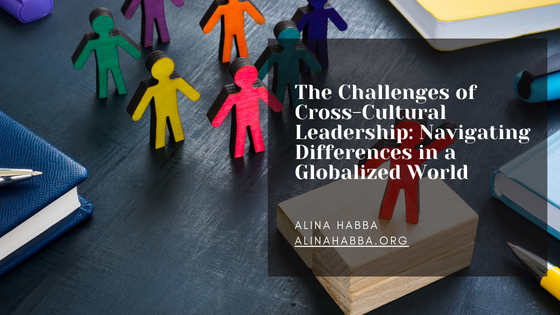To navigate cultural differences in a globalized world, prioritize empathy and open-mindedness. Learn and respect diverse customs and traditions.
Globalization has interconnected the world like never before, making cultural awareness essential. Businesses, travelers, and digital nomads often encounter diverse cultures. Understanding these differences fosters better relationships and smoother interactions. Misunderstandings can arise from cultural gaps, affecting communication and cooperation.
Embracing cultural sensitivity helps in avoiding such pitfalls. Researching and learning about other cultures shows respect and builds trust. Engaging with locals and asking questions enhances your cultural knowledge. Practicing active listening and empathy can bridge cultural divides. These steps can help create a more harmonious global environment, benefiting both personal and professional relationships.
The Importance Of Cultural Awareness
Living in a globalized world means interacting with diverse cultures. Cultural awareness is crucial for successful communication and collaboration. It helps avoid misunderstandings and builds respect among people.
Understanding Cultural Norms
Every culture has unique norms and values. Understanding these cultural norms helps us interact better. For instance, in some cultures, eye contact is a sign of confidence. In others, it may be seen as rude. Knowing these differences makes communication smoother.
Benefits Of Cultural Sensitivity
Cultural sensitivity offers many benefits:
- Improves relationships
- Enhances workplace productivity
- Reduces conflicts
- Increases mutual respect
Being culturally sensitive allows us to appreciate diversity. It fosters a more inclusive environment. This inclusivity leads to better teamwork and innovation.

Credit: theconversation.com
Common Cultural Differences
Understanding cultural differences is essential in our globalized world. People from different backgrounds interact daily. Recognizing these differences can prevent misunderstandings and foster better relationships.
Communication Styles
Communication varies greatly across cultures. In some cultures, people speak directly. They value clarity and straightforwardness. In other cultures, indirect communication is preferred. Here, people avoid direct confrontation. They use subtle hints and context to convey messages.
For example, in many Asian cultures, saving face is important. People may avoid saying “no” directly. Instead, they might say, “I will try” or “Maybe.” In contrast, Western cultures often appreciate a direct “yes” or “no.”
Understanding these styles can help navigate conversations effectively. Always observe and adapt to the communication style of your counterpart.
Body Language
Body language can also differ widely. Gestures, facial expressions, and personal space vary by culture. In some cultures, maintaining eye contact shows confidence. In others, it may be seen as disrespectful.
For instance, in the Middle East, people might stand close when talking. This shows trust and friendship. In contrast, in Northern Europe, personal space is valued. Standing too close can make people uncomfortable.
Understanding these non-verbal cues is crucial. Misinterpreting body language can lead to misunderstandings.
| Aspect | Direct Communication | Indirect Communication |
|---|---|---|
| Examples | USA, Germany | Japan, India |
| Characteristics | Clear, straightforward | Subtle, context-based |
- Observe your surroundings.
- Adapt your communication style.
- Respect personal boundaries.
Challenges In Cross-cultural Interactions
In today’s globalized world, interacting with people from different cultures is common. Yet, these interactions come with their own set of challenges. Understanding and navigating these challenges is crucial for effective communication and collaboration.
Miscommunication Issues
Miscommunication is a frequent issue in cross-cultural interactions. Language barriers can lead to misunderstandings and errors. Even when people speak the same language, cultural nuances can cause confusion. For example, humor and idioms often don’t translate well across cultures.
Non-verbal communication also varies widely. Gestures and facial expressions can mean different things in different cultures. This can lead to misinterpretations and unintended offense.
Stereotyping And Prejudices
Stereotyping and prejudices are another significant challenge. People often have preconceived notions about others based on their culture. These stereotypes can create bias and hinder genuine understanding.
Prejudices can lead to unfair treatment and discrimination. They can also create a hostile environment, making effective communication difficult. Overcoming these biases requires conscious effort and an open mind.
| Challenge | Impact |
|---|---|
| Miscommunication | Leads to misunderstandings and errors |
| Stereotyping | Creates bias and hinders understanding |
| Prejudices | Leads to unfair treatment and discrimination |
Building Cultural Competence
In today’s globalized world, cultural competence is essential. It allows us to interact effectively with people from different cultures. This skill helps in both personal and professional settings. By building cultural competence, we can bridge gaps and foster better relationships.
Education And Training
Education is a powerful tool for building cultural competence. Schools and workplaces should offer courses on global cultures. These courses can cover history, customs, and social norms. Training sessions can also include role-playing activities. This helps participants understand different perspectives.
Online courses are another good option. Websites like Coursera and edX offer many free courses on cultural studies. These courses are accessible and convenient. They can be taken at one’s own pace, making them flexible.
| Resource | Description |
|---|---|
| Coursera | Offers a wide range of cultural courses. |
| edX | Provides free courses on global cultures. |
| Local Community Centers | Often have cultural workshops and events. |
Exposure And Experience
Exposure to different cultures is crucial for developing cultural competence. Traveling to new places can offer direct experience. It allows you to see and understand different lifestyles. If traveling is not an option, local cultural events can be just as effective.
- Attend cultural festivals in your city.
- Join cultural clubs or organizations.
- Volunteer for events that celebrate diversity.
Another way to gain exposure is through media. Watch international films and listen to global music. Read books from authors around the world. These activities broaden your understanding and appreciation of different cultures.
Effective Communication Strategies
In a globalized world, understanding cultural differences is key. Effective communication strategies help bridge cultural gaps. This section explores two important strategies: active listening and non-verbal cues.
Active Listening
Active listening means fully focusing on the speaker. This involves:
- Paying attention without distractions
- Nodding to show understanding
- Asking questions for clarity
- Paraphrasing what the speaker said
Active listening builds trust and understanding. It shows respect for different viewpoints.
Non-verbal Cues
Non-verbal cues include facial expressions, gestures, and body language. These cues can vary between cultures:
| Culture | Non-Verbal Cue | Meaning |
|---|---|---|
| Japan | Bowing | Respect |
| Middle East | Eye contact | Trust |
| USA | Firm handshake | Confidence |
Understanding non-verbal cues prevents misunderstandings. It also enhances communication effectiveness.
Adapting To Cultural Norms
In a globalized world, adapting to different cultural norms is essential. Whether you are traveling, working, or studying abroad, understanding and respecting local customs can make your experience smoother and more enriching. Adapting to cultural norms shows respect and helps in building better relationships.
Learning Local Etiquette
Learning local etiquette is crucial in any new culture. Start by observing how locals interact and follow their lead. Here are some tips to help you navigate local customs:
- Greetings: Learn how locals greet each other. For instance, bowing in Japan or shaking hands in the USA.
- Dress Code: Dress appropriately according to local standards. In some cultures, modest clothing is a must.
- Dining Manners: Understand dining etiquette. For example, in some Asian cultures, slurping noodles is polite.
- Gift Giving: Know the customs around gift-giving. In some cultures, it is polite to refuse a gift initially.
Understanding Social Hierarchies
Understanding social hierarchies is important for smooth interactions. Social structures vary from culture to culture. Knowing your place within these structures can prevent misunderstandings. Here are some points to consider:
- Respect for Elders: In many cultures, elders are highly respected. Always show deference to older individuals.
- Titles and Forms of Address: Use appropriate titles and forms of address. For example, using “Mr.” or “Mrs.” in formal settings.
- Workplace Hierarchies: Understand the workplace hierarchy. Know who to report to and how to communicate with higher-ups.
- Social Status: Be aware of social status indicators. For instance, in some cultures, social status can affect seating arrangements.
Adapting to cultural norms may take time, but it’s worth the effort. Understanding and respecting these differences can lead to meaningful connections and a richer experience.
Cultural Sensitivity In The Workplace
In today’s globalized world, workplaces are a melting pot of cultures. Understanding and respecting these cultural differences is crucial. Cultural sensitivity helps create a positive, inclusive environment. It also enhances teamwork and boosts employee morale.
Inclusive Leadership
Inclusive leadership is key to cultural sensitivity. Leaders should be aware of different cultures. They need to respect and value each team member’s background. This approach encourages openness and trust.
Here are some practices for inclusive leaders:
- Active listening: Pay close attention to what team members say.
- Empathy: Understand and share the feelings of others.
- Adaptability: Be flexible in communication and management styles.
- Continuous learning: Regularly update knowledge about different cultures.
Diverse Team Dynamics
Understanding diverse team dynamics is essential. Each team member brings unique perspectives. These differences can lead to innovative solutions.
Consider these strategies to manage diverse teams effectively:
- Communication: Use clear and simple language.
- Team-building activities: Foster relationships through group activities.
- Conflict resolution: Address misunderstandings quickly and fairly.
- Cultural awareness training: Educate team members about different cultures.
| Benefits of Cultural Sensitivity | Details |
|---|---|
| Improved Communication | Clearer and more effective exchanges. |
| Enhanced Collaboration | Better teamwork and cooperation. |
| Increased Innovation | Diverse ideas lead to creative solutions. |
| Employee Satisfaction | Happier and more engaged workforce. |

Credit: www.hrvisionevent.com
Leveraging Cultural Diversity
In today’s globalized world, understanding cultural differences is crucial. Embracing cultural diversity can provide numerous advantages. By leveraging these differences, businesses can thrive in a competitive landscape. Below, we explore how cultural diversity can fuel innovation and drive global market expansion.
Innovation And Creativity
Cultural diversity fosters innovation and creativity. Different perspectives lead to unique solutions. When people from varied backgrounds collaborate, they combine their ideas. This synergy often sparks groundbreaking innovations.
For instance, a team with members from different countries can approach problems differently. This diverse approach can result in innovative products and services. Furthermore, cultural diversity encourages creative thinking. People are more likely to think outside the box.
- Different viewpoints
- Unique problem-solving approaches
- Enhanced creativity
Incorporating cultural diversity into your team can lead to unexpected and valuable outcomes.
Global Market Expansion
Global market expansion becomes more feasible with a culturally diverse team. Understanding local customs and preferences is crucial. A diverse team can provide insights into various markets.
For example, launching a product in Asia requires knowledge of local tastes. Similarly, entering the European market involves understanding different regulations. A diverse team can bridge these gaps effectively.
| Region | Key Insights |
|---|---|
| Asia | Local tastes and preferences |
| Europe | Regulatory landscape |
Additionally, leveraging cultural diversity can enhance customer relationships. Customers feel valued when businesses respect their culture. This respect builds trust and loyalty.
In summary, cultural diversity not only drives innovation but also paves the way for successful global market expansion.
Resources For Cultural Learning
Understanding and respecting cultural differences is key in a globalized world. To effectively navigate these differences, leveraging the right resources can be invaluable. Here are some essential resources to help you learn about different cultures.
Books And Articles
Books and articles provide deep insights into various cultures. These resources cover history, traditions, and social norms.
- Books: Reading books about other cultures broadens your perspective. Some notable titles include:
- “The Culture Map” by Erin Meyer
- “Cultures and Organizations” by Geert Hofstede
- “Beyond Culture” by Edward T. Hall
- Articles: Articles offer current insights and trends. Websites like National Geographic and BBC Culture provide valuable content.
Workshops And Seminars
Workshops and seminars offer hands-on learning experiences. These events are interactive and often led by experts.
| Event Type | Description |
|---|---|
| Workshops | Workshops provide practical skills and knowledge about specific cultures. |
| Seminars | Seminars offer in-depth discussions and expert insights on cultural topics. |
Attending these events helps you engage with others who share your interest. This can lead to valuable networking opportunities.

Credit: lattice.com
Conclusion
Understanding cultural differences enriches our global interactions. Embrace diversity to foster better communication and relationships. Stay open-minded, respectful, and adaptable. Use these strategies to navigate cultural nuances effectively. Enhance your global experiences by valuing cultural diversity. Remember, our world thrives on mutual respect and understanding.

